REMAP Ecosystem Governance
Table of contents
- 1. Conceptual Architecture of REMAP
- 2. Technical Architecture Concept
- 3. REMAP Ecosystem Governance
- 4. Tokenomics
- 5. REMAP Token-Economic Design
- 6. REMAP Coin (RMC)
- 7. Starting the Ecosystem
- 8. Technology Stacks: Identity and Access Control in REMAP
- 9. Technology Stacks: Applications of REMAP - Modules and Interactions
- 10. Technology Stacks: Cosmos-Specific REMAP Architecture
REMAP Ecosystem Governance
The governance system in REMAP comprises DAOs that make important decisions in the network for continuous development and improvement of the REMAP ecosystem. The governance system aims to ensure quality and compliance and community well-being and promotes sustainable growth based on honest and active participation.
Composition of the DAOs
The conventional DAOs that govern web3 applications are mostly defined by the amount of their token ownership within a specific project. Research works have shown that for these types of governance systems, power tends to converge at the centre, with few people making important platform decisions simply based on the number of tokens they have accumulated in the project. REMAP, therefore, proposes a governance system where individual members of various DAOs in the network are defined by their roles, reputation and token ownership.
Role-based identities are assigned to various members of the DAO and qualification for each role can be ascertained by examining the credentials presented before joining the network. These roles can be specified as properties with the SBTs of the DAO members. Verifiable credentials provide the possibility for decentralized identifiers to verify various digital certifications presented by the members of the DAO. Thus, ensuring that only qualified individuals, capable of making decisions in various PropTech sectors are admitted into REMAP DAOs. Reputation points are assigned to DAO members based on their historical activity in the network. For instance, a developer who published several modules that resulted in several successful transactions in the application-specific blockchains will have a higher reputation than a new developer who recently joined the REMAP network and was admitted into a DAO. By considering the amount of REMAP token ownership, roles assigned to a DAO member and their reputation, a weighted voting system can be used to ensure that quality, unbiased decisions are made in the REMAP network.
Characteristics and Functions of the DAOs
The main functions of the DAO in the REMAP ecosystem can be broadly grouped into two, the first is to provide quality assurance for modules developed in various layers of the REMAP architecture and applications developed in various REMAP zones. The second is to specify rules that guide the interactions between the modules and applications in the REMAP network.
Since modules such as Libraries, SDKs and re-usable smart contracts provide the main building blocks for applications deployed in the REMAP network, proper quality control and auditing tasks must be carried out by the respective DAO before the module is approved to be deployed in the REMAP network. Since members of the DAOs are qualified auditors in their respective PropTech fields, and REMAP uses a role-based SBT in assigning DAO roles, therefore, REMAP governance mechanism ensures that the various PropTech applications that are developed and deployed in the network are compliant with the necessary regulations.
Aside from the quality control, the DAOs will also provide settlement rules for interactions in the REMAP ecosystem. The fee interactions between modules or between the REMAP users and the modules will be specified by the DAOs in the respective architecture layer where the interaction occurs. This ensures that the creators of the modules receive appropriate rewards each time their module is called by another module in the REMAP. Furthermore, the transaction fees for calling functions in the application-specific blockchains will be determined by the DAOs that reside in the zone where the PropTech application is deployed.
Zonal and Layer Integration of the REMAP Governance Mechanisms
The modules that provide the building block for applications developed in the ecosystem are organized in three layers – L1, L2 and L3. Furthermore, the application-specific blockchains that are part of the REMAP network are organized in various zones while the main REMAP network provides a hub of interoperability bridge that enables information exchange between the various blockchains. In general, the layer-based DAOs will reside in the REMAP central hub to validate the modules created while application-specific DAOs will reside in various zones to validate the PropTech DApps created in REMAP network.
Hence, the DAOs in L1 provide quality assurance for infrastructure-related modules created in the network. The L2 DAOs provide quality control for re-usable DApp-related functional modules deployed in L2. The DAOs in L3 will provide quality assurance for front-end business logic for interacting with various modules and DApps in the REMAP network. The DAOs in the zones will specify transaction fees for using functions in the various PropTech applications deployed in the various application-specific blockchains. The zonal DAOs will also specify the percentages for fair distribution of transactions for the application developers and the developers of the reusable modules called by these applications.
Governance Processes and Mechanisms
Proposals for changes at the various DAO Layers are submitted through REMAP Improvement Change Proposals (RICP). A RICP is a document that complies with the guidelines established by the DAOs and contains specific and detailed information on the proposed improvement change. This document will be put up for off-chain review in an iterative feedback model, an activity carried out by the governance roles designated by the DAOs. For the decentralized and automated operation of the governance, REMAP provides mechanisms that are linked to the life cycle of the RICPs. Below is the simplified life of a RICP.
Figure 4: REMAP improvement change proposal Life Cycle
Off-chain proposal review
It has two main objectives.
1. Seek approval of the proposal through an iterative feedback model carried out between the requesting SBT and the SBTS with governance roles with this assigned task.
2. Gain community support in an off-chain stage, improve the chances of community participation in a later voting stage.
Summit proposal to the DAO
Once reviewed and approved off-chain, the RCIP is sent and registered in the corresponding DAO. In this part, the DAO and the governance roles with these responsibilities define the voting requirements, such as which SBT of the ecosystem can participate, periods and threshold for the on-chain voting stage.
On-chain proposal voting
Once registered in the DAO and with the established voting requirements, the on- chain voting stage opens and all those SBT called or enabled for voting will be able to vote within the established periods.
If the proposal manages to exceed the established voting threshold, it will move to the next phase. Otherwise, the proposal will be finalized.
Proposal implementation
Proposal implementation
The DAO and the governance roles with these responsibilities will prepare and execute the off- chain and/or on-chain changes, updating the ecosystem and finalizing the proposal cycle.
After a proposal (RCIP) receives approval through the voting mechanism, it advances to a more detailed implementation phase. This phase covers activities such as planning the approved changes, assigning necessary roles and resources, establishing protocols and testing environments, ensuring quality approvals, determining rollback policies, executing the change on the network, and monitoring changes. Key features of the RICP-process include voting fees for participation and a weighted voting model. In order to participate in a vote, a voting fee has to be paid in RMC. Proceeds from voting fees are used to finance future projects. Furthermore, REMAP determines the weight of each vote based on the parameters registered in the individual SSI, taking into account the knowledge of business processes and reputation of the voter when registering votes (see Figure 5). Using role-responsibility-based DAOs, RICPs, weighted voting model and on-chain proposal voting, REMAP governance members have economic and management control over the entire ecosystem. Any needed compliance and incentives for business process improvement within the ecosystem can be implemented with this governance structure.
Figure 5: REMAP Voting weight parameters
Know-how and business processes experience
This parameter aims to enhance business process performance, quality and efficiency.
Ecosystem reputation
This parameter aims to ensure the welfare of the community over the individual good. Prevent corrupt or malicious roles from having a high voting weight, regardless of their knowledge.
Modules creation
This parameter aims to evaluate the creation and capture of value through the modules deployed in the ecosystem.
RMC/Module holdings
This parameter aims to evaluate the retention of value within the ecosystem.
Scope of Governance System
RCIPs can deal with various topics within the ecosystem that are subject to decision-making by governance mechanisms, the DAOs, and their members. Topics that may be discussed under an RICP include:
- Governance Framework Decisions:
- Improvements to the governance framework: Requesting improvements to the governance framework. These changes can impact the governance logic of a layer or the entire module-layered architecture.
- Access and responsibilities: Specifying which types of SBTs are allowed to participate and detail their distinct responsibilities across various DAOs and layers.
- Ecosystem terms and conditions: Establishing and regularly updating the general and specific terms and conditions that govern participation and interactions within the ecosystem.
- Voting system models: Evaluating and proposing different models for the voting system, aiming to enhance decision-making processes and community involvement.
- Conflict resolution mechanisms: Proposing automated mechanisms for resolving conflicts within the different business processes, modules and layers.
- Community/Ecosystem Decisions:
- Enhancing community engagement: Implementing strategies and initiatives to improve community involvement.
- Funding fees for on-chain voting: Setting and periodically reviewing funding fees associated with on-chain voting, ensuring they are not excessive and facilitate active participation.
- Nominal fee adjustments: Adjusting nominal fee percentages, analyzing their impact on revenue sharing between different layers.
- Technical Decisions:
- Blockchain technical adjustments: Analyzing and proposing changes on blockchain parameters, such as block size and validation periods. This considers potential effects on network efficiency and performance.
- Business Decisions:
- Decision-making on fund usage: Creating transparent and accountable processes for decision-making regarding the use of ecosystem funds.
- Quality in module deployment requirements: Establishing minimum quality standards for deploying modules in the layers to maintain a high performance.
At this point it has to be emphasized that at the launch, and until the governance and its DAOs achieve a sufficient level of maturity, participation, and decentralization, the REMAP Organization will retain the authority to execute emergency changes. This can cover events such as detecting occurring bugs or vulnerabilities, for which there is not enough time to complete a full RCIP process. These actions will be taken in the interest of protecting and benefiting the ecosystem and its community.


